Synonym: Lhermitte’s phenomenon, Barber chair phenomenon Definition of Lhermitte’s Sign Lhermitte’s sign (pronounced Ler-meets) is an electric shock-like sensations, spreading along the spine in a cervico-caudal direction and into the arms and legs felt upon active or passive flexion of the neck. Reverse Lhermitte’s Sign is defined when symptoms are…
Author: Epomedicine
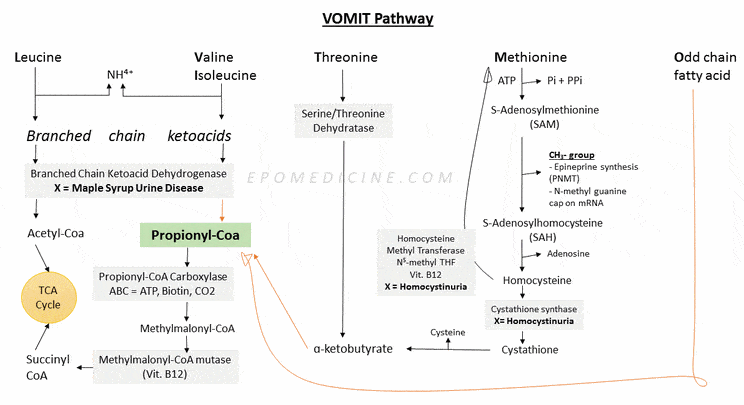
VOMIT Pathway – Propionyl CoA Intermediate
Propionyl CoA is a common intermediate in catabolism of essential amino acids and odd chain fatty acids. It is also called VOMIT pathway which stands for: Valine Odd chain fatty acids Methionine Isoleucine Threonine They enter TCA cycle – using PMS pathway: Propionyl CoA Methylmalonyl CoA Succinyl CoA Defects in…

Ischemic Heart Disease Pathophysiology
Definitions of Related Terms A) Ischemic Heart Disease (IHD): It is the imbalance between myocardial oxygen supply and demand, resulting in myocardial hypoxia and accumulation of waste metabolites. The components of IHD are: Stable Angina Acute Coronary Syndrome (ACS) B) Stable Angina: Pattern of chronic, predictable, transient chest discomfort during…
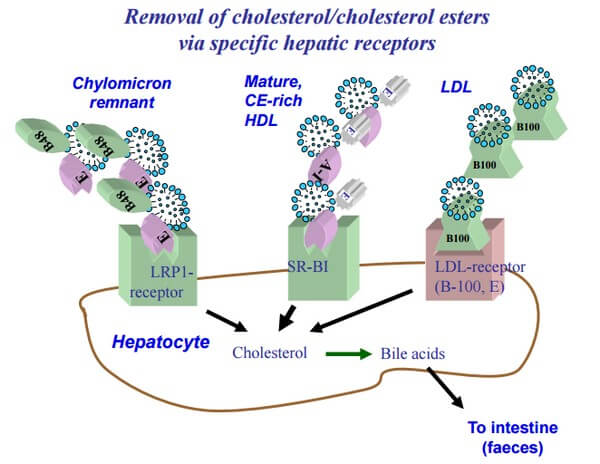
Lipoprotein Metabolism Simplified
Lipoproteins Composition of Lipoproteins: Non-polar core – mainly triglycerides and cholesteryl esters Single surface layer – amphipathic phospholipids and cholesterol Apoprotein or Apolipoprotein Class Abbreviation Density Protein Lipid content Electrophoretic mobility Chylomicrons CM lowest lowest highest (exogenous triacylglycerol) don’t migrate Very low density lipoproteins VLDL .. .. .. (endogenous triacylglycerol)…

Neutropenic Fever and Empiric Therapy
Synonym: Febrile Neutropenia Definition of Neutropenic Fever Fever: Single oral temperature ≥ 38.3 °c (101 °F) or ≥ 38 °c (100.4 °F) sustained over 1 hour Neutropenia: Absolute Neutrophil Count (ANC) <500 cells/cu.mm or ANC expected to fall <500/cu.mm in next 48 hours Profound neutropenia: ANC <100/cu.mm Prolonged neutropenia: Neutropenia for >7 days…
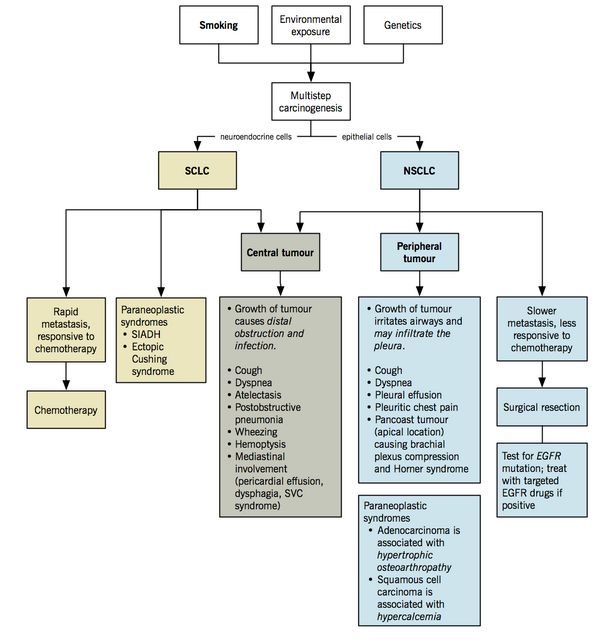
Bronchogenic Carcinoma Etiopathogenesis
INCIDENCE Male > Female Age group: 50-75 years Second highest cancer in both sexes after prostate (male) and breast (female) Smokers > Non-smokers ETIOLOGY OF LUNG CANCER A. Cigarette smoking: Smoking is the single most important risk factor for lung cancer, which can cause all types of lung cancer but…
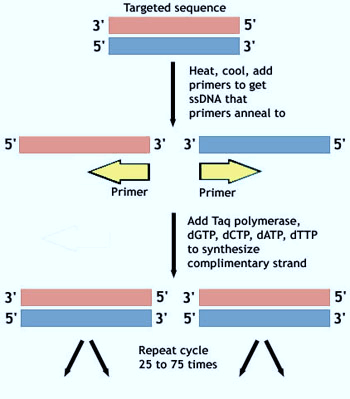
Polymerase Chain Reaction (PCR) Made Easy
What is Polymerase Chain Reaction ? It is a process of artificial DNA replication (amplification of a selected part of DNA). As the name suggests: Polymerase: It requires DNA polymerase for extending the added primers to complete DNA replication. Chain Reaction: PCR is run in cycles. The number of molecules…
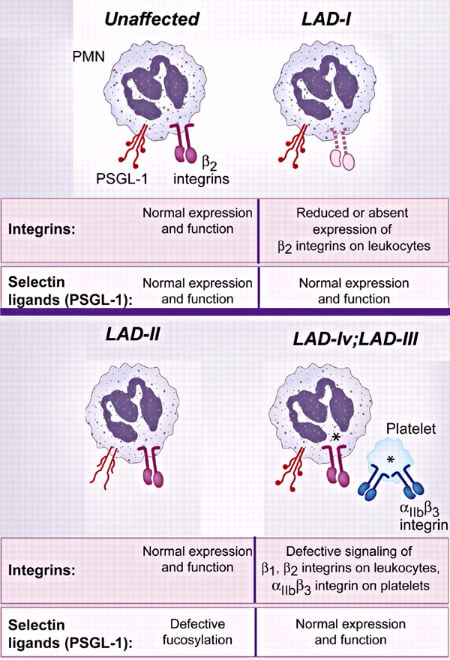
Leukocyte Adhesion Cascade and Defect : Simplified
Capture or Tethering Increased vascular permeability and vasodilation are mediated by inflammatory mediators like histamine released by inflammatory cells in response to PAMPs expressed by pathogens. Hemoconcentration (owing to increased vascular permeability) and decreased velocity of blood flow (owing to vasodilation) leads to peripheral pooling of the leukocytes (i.e. towards…
